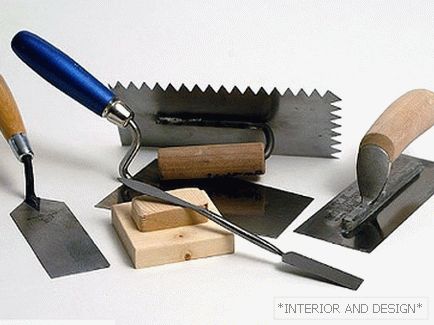For a strong adhesion of the solution to the surface on which it is applied during plastering, preparation for plastering is required. The surface is cleaned of dust and dirt, and it marks for roughness.

The surface is prepared most thoroughly under the plaster that has disappeared; a trojan, zubchatka or buchard is used. A good base for plastering is new stone or brick surfaces. If the clutch is laid in the wasteland and it has sufficient roughness, you only need to brush it and wash it well. When the surfaces are dirty, they need to be cleaned and notched. If the seams were filled with mortar (embroidered), they should be cut down to a depth of not less than a centimeter, and then cleaned with a steel brush.
New concrete surface with sufficient roughness, cleaned of dust and washed with water, if necessary, use a steel brush for washing and make a notch. Surfaces made of stone or concrete that have not been plastered for more than a year should be cleaned, rinsed and notched. Places painted with oil paint or stained with clay should be cleaned especially carefully. If there are places in the masonry that are easily bent on when they are notched, they are cut down to a solid foundation.
When making a notch, put on goggles, the instruments should have a strong handle on which they should firmly hold.
When preparing for plastering, a steel brush is used to clean the surfaces - it is attached to the surface, and pressed, moved to the side. Thus, a thin film of dirt is cleared from the surface; if it is not removed, the solution does not adhere well. When the surface is in resin or oil, it is necessary to cut down to the depth at which there is no trace of them, otherwise the oil may tread with time.
To apply incisions, use a chisel, a toothed tooth, a trojan horse, an ax, or a bouchard; strokes are applied 3-5 mm in depth and 10-15 mm in length. The seams in the brickwork are cut by a chisel to a depth of not less than 10 mm. The hammer must weigh at least a kilogram. After the seams are cut down, the grooves remain, into which the solution gets into at the time of plastering. Thanks to the notches, the solution adheres firmly to the surface.



